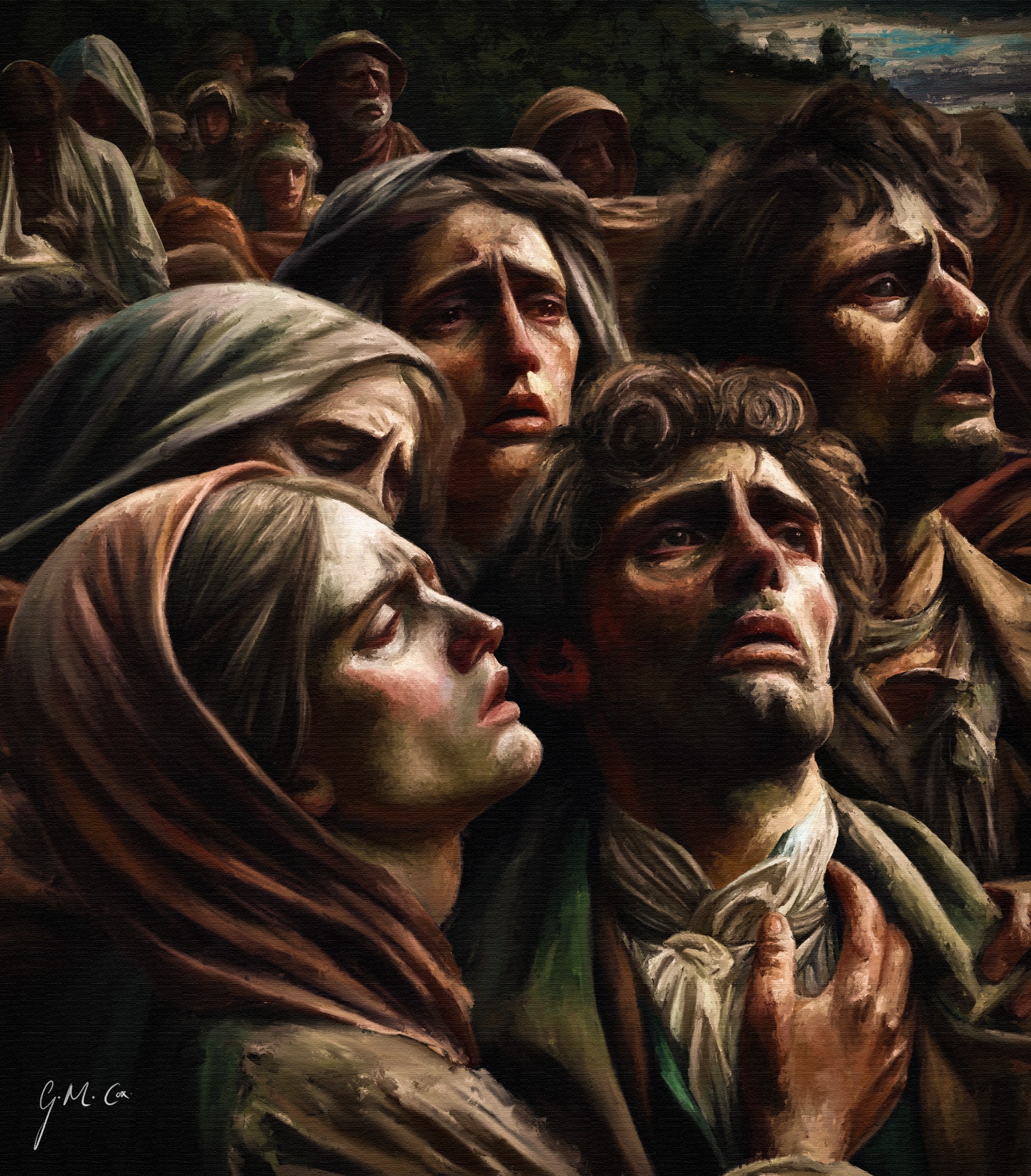
Lumen Tristitia (2024)
Lumen Tristitia, Latin for “Light of Sorrow," captures the instant before revelation. A gathered crowd, their faces illuminated by a divine but unseen source, stare upward in anguish and awe. Their expressions are stretched between disbelief and devotion, the chiaroscuro pressing the divine light against the grime of the earth. Every face is its own narrative of faith, grief, and helpless hope.
⤷ This painting feels like a fragment from a lost fresco or the aftermath of a biblical miracle witnessed by mortals unprepared to see it. Cox’s use of composition pushes the figures into one another, creating a claustrophobic unity of emotion. No single figure dominates; instead, the collective grief becomes the subject. The crowd’s faces, lined with exhaustion and reverence, are carved by light that both sanctifies and condemns.
The title underscores that tension. “Lumen” evokes holiness, illumination, transcendence. “Tristitia” brings it down to the human condition—melancholy, loss, and mourning. The result is not a religious scene but a human one, where light exposes suffering rather than redeeming it.
Rendered with a palette reminiscent of late Baroque religious drama, Lumen Tristitia plays with the contradiction of divine beauty emerging from despair. It’s not a scene of salvation but of recognition: the moment the faithful realize that illumination doesn’t promise mercy.
0 Comments Add a Comment?